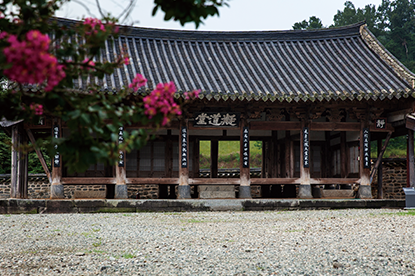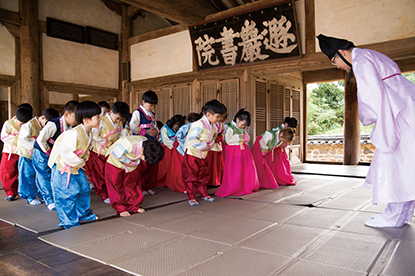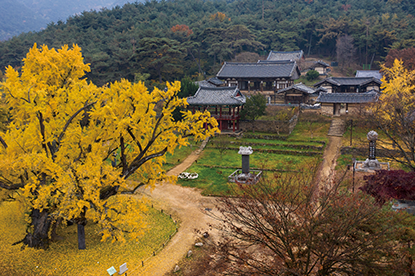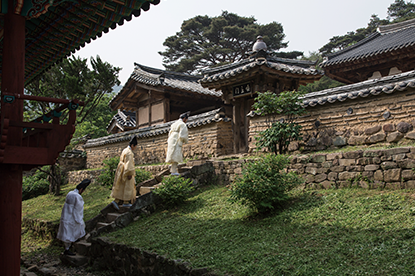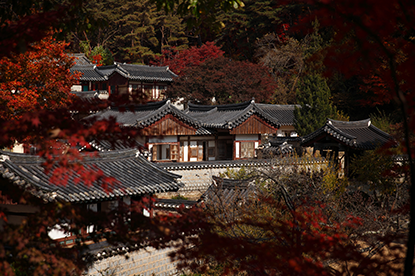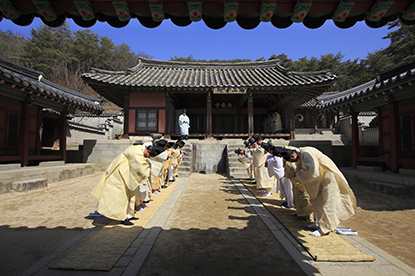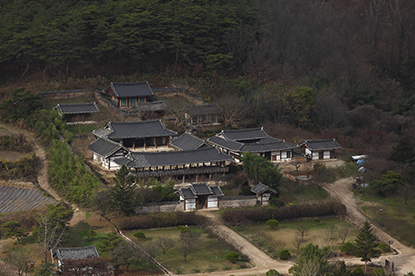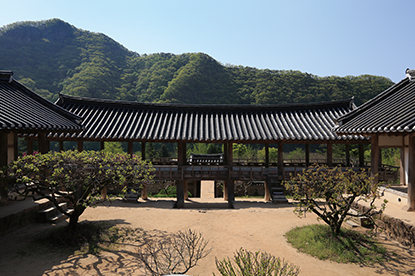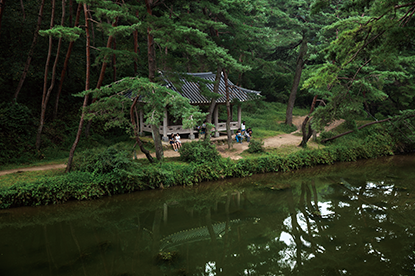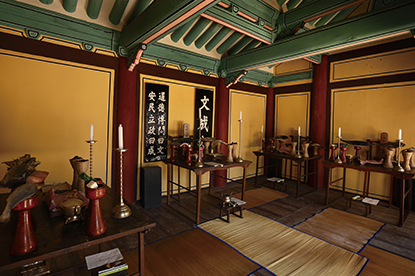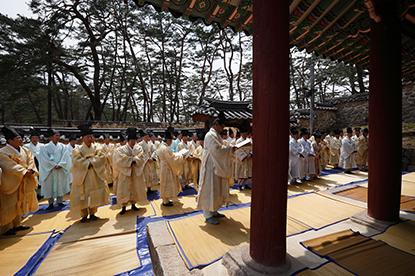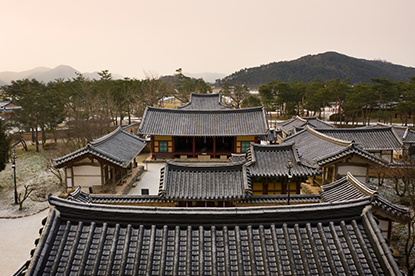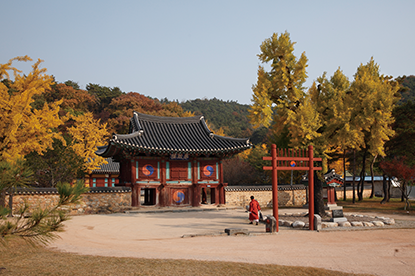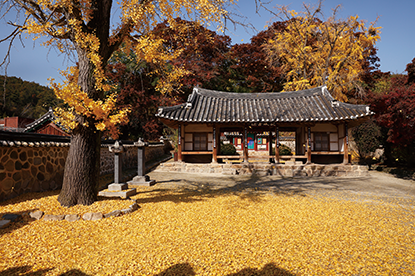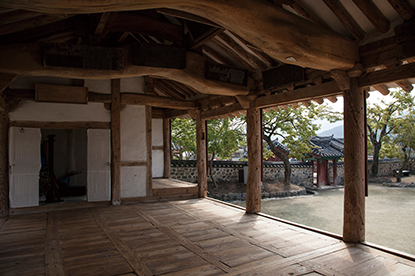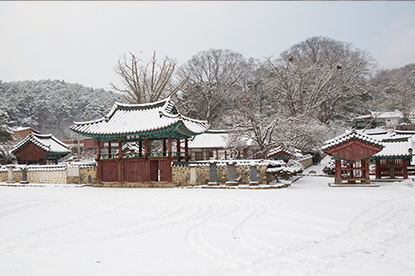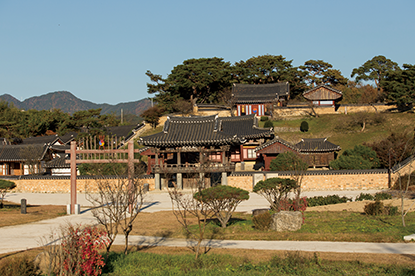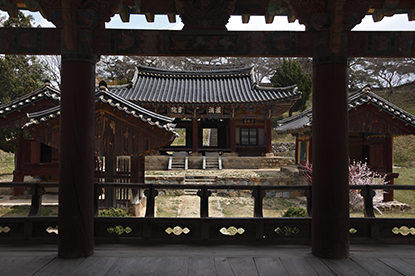Korean Heritage Passport Tour
- Incheon International Airport PR Center (Traveler Center)
- Gaya Culture Route
- Gwandong Pungryu Era Route
- Baekje Antiquity Route
- Korean Temple Monasteries (Sansa) Route
- Korean Confucian Academy Route
- Prehistoric Landscape Route
- Mythic Landscape Route
- Folk Music Route
- Royalty Route
- Golden Era Route
Gyeongju, Nonsan, Dalseong, Andong, Yeongju, Jangseong, Jeongeup, Hamyang
- The cradle of Korean scholars
The Sarim (士林), who led the political and social discourse in Joseon using values and principles championed by the Neo-Confucianism school of thought, were groups of provincial intellectuals living in rural regions. They valued learning and education, which is why they were motivated to open local academies called “Seowon.” Seowon, first built in the mid-Joseon Dynasty period, were not only educational institutions tasked with academic research and talent development, but also religious establishments that commemorated ancient sages from the past. During the Joseon Dynasty, it was typical for an academic institution to also have a shrine for rituals, and therefore it was natural for Seowon academies to feature shrines. The Seowon, which schooled its students on the Neo-Confucian worldview and the proper spirit a true scholar should have, is a unique Korean Heritage of Korea with its own distinct architectural style. Of the 650 Seowons nationwide, only 47 remain to this day, largely due to the royal decree issued by Heungseon Daewongun to close down most Confucian academies. Nine of these academies that have managed to preserve their tradition particularly well, fortunately, have been listed as UNESCO World Heritage sites under the category “Korean Neo-Confucian Academies,” giving them a better chance to pass on the legacy of Seowon academies. These Seowons, which are found across the country, have outstanding value in that they showcase the cultural traditions of Korea related to Neo-Confucianism.

- Oksanseowon, Gyeongju
- Donamseowon, Nonsan
- Dodongseowon, Dalseong
- Dosanseowon, Andong
- Byeongsanseowon, Andong
- Sosuseowon, Yeongju
- Piramseowon, Jangseong
- Museongseowon, Jeongeup
- Hamyang Namgyeseowon
Oksanseowon in Gyeongju, the first Seowon to popularize the “Numaru” concept
-
Address
216-27, Oksanseowon-gil, Angang-eup, Gyeongju-si, Gyeongsangbuk-do
-
Inquiries
(Gyeongju City Hall) 054-779-6124
-
Stamp
Tourist information center at Oksanseowon
-
Directions
Take a bus bound for Gyeongju at Seoul Express Bus Terminal → Get off at Gyeongju Express Bus Terminal → Take bus no. 203 at the Inter-city Bus Terminal bus stop (to Terminal, Angyeong Terminal, Oksanseowon) → Get off at Oksan 2-ri bus stop → Walk for 5 minutes
Dedicated to renowned Confucian scholar Yi Eonjeok, the Oksanseowon was established in 1572 CE. Yi Eonjeok, a scholar and skilled administrator, played an important role in establishing the Neo-Confucianism school of thought in Joseon. Seowon academies typically feature academic facilities at the front and a shrine built at the back, and the Oksanseowon follows this conventional layout. Mubyeonru, where students at Oksanseowon used to take breaks from their studies, is the first example of a Numaru structure (a wide-open living room floor raised like an attic) built into a Seowon compound. A Numaru, which connects the landscape outside the Seowon with the living space inside the compound, creates harmony and balance between the Seowon and the surrounding natural environment. Oksanseowon has the largest collection of books among all the Seowon libraries remaining to this day. Signature works include the Samguk Sagi (national treasure) and the Yi Eonjeok Sugobon Collection-Sokdaehakhokmun (treasure), which is an important resource in studying the Gyeonghak discipline from the Joseon Dynasty.
Published in 1145 CE (23rd year of King Injong of Goryeo), the Samguk Sagi is a compilation of the history of the Three Kingdoms period written by Kim Bu-sik (1075~1151 CE). Together with Samguk Yusa, Samguk Sagi is recognized as one of the foundational historical records covering the Three Kingdoms period of Korea. Gijeonche is a type of narrative system used when writing historical records. It involves following the life of a particular historical figure, then adding stories or records along with that person’s life to paint a broader picture of a particular era.
The Yi Eonjeok Sugobon Collection-Sokdaehakhokmun
Yi Eonjeok (pen name: Hoejae) was a Confucian scholar and politician from the reign of King Jungjong of Joseon (1491~1553 CE). The Yi Eonjeok Sugobon Collection was written by Yi Eonjeok himself between 1547 CE (2nd year of King Myeongjong) and 1553 CE (8th year of King Myeongjong). The Collection supplements the Daehakhokmun (Questions and Answers on The Great Learning) written by Zhu Xi from the Song Dynasty. It was used during debating sessions by King Jeongjo himself, a fact that can be proven by the preface written by King Jeongjo, saying, “Jeseonjeonghoejaesokdaehakhongmungwonsoo,” when he returned the Collection to Yi Eonjeok.

Provided by the Korea Seowon Foundation
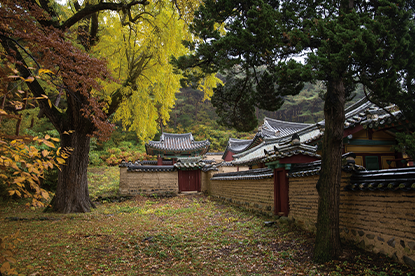
Provided by the Korea Seowon Foundation
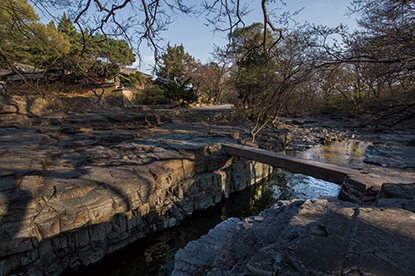
Provided by the Korea Seowon Foundation










